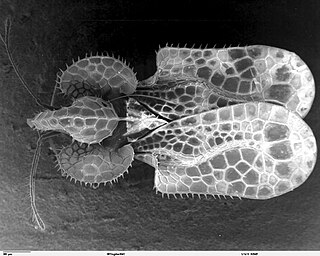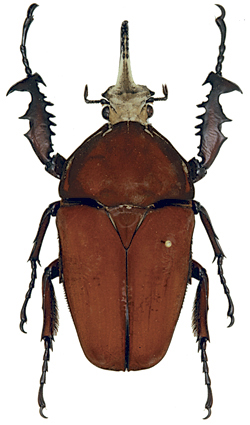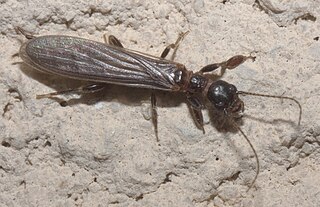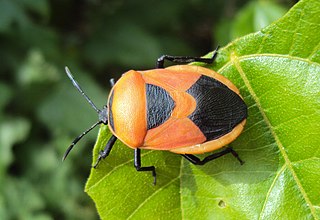
Dame Vivienne Isabel Westwood was an English fashion designer and businesswoman, largely responsible for bringing modern punk and new wave fashions into the mainstream. In 2022, Sky Arts ranked her the 4th most influential artist in Britain of the last 50 years.

Frederick William Hope was an English clergyman, naturalist, collector, and entomologist, who founded a professorship at the University of Oxford to which he gave his entire collections of insects in 1849. He described numerous species and was a founder of the Entomological Society of London in 1833 along with John Obadiah Westwood.

William Westwood, also known as Jackey Jackey, was an English-born convict who became a bushranger in Australia.

The Cimicomorpha are an infraorder of insects in the order Hemiptera, the true bugs. The rostrum and other morphology of all members apparently is adapted to feeding on animals as their prey or hosts. Members include bed bugs, bat bugs, assassin bugs, and pirate bugs.

Flower chafers are a group of scarab beetles comprising the subfamily Cetoniinae. Many species are diurnal and visit flowers for pollen and nectar, or to browse on the petals. Some species also feed on fruit. The group is also called fruit and flower chafers, flower beetles and flower scarabs. There are around 4,000 species, many of them still undescribed.

The Harpactorinae are a large subfamily of the Reduviidae. About 300 genera and 2,000 species worldwide have been described. Some of the species of the genera Zelus, Pselliopus, Sinea, and Apiomerus are of interest as biological pest control agents.

Mecynorhina are beetles from the subfamily Cetoniinae, tribe Goliathini. The genus was created by Frederick William Hope, in 1837.

Westwood House is a stately home, near Droitwich, Worcestershire, England. It has been subdivided into twelve self-contained apartments. The house has origins as an Elizabethan banqueting hall with Caroline additions and is a Grade I listed building. It was for several centuries the seat of the Pakington family. Situated west of Droitwich, it lies in the centre of its former estate, Westwood Park, which is Grade II listed in the National Register of Historic Parks and Gardens.

Cerosterna is a genus of flat-faced longhorns beetle belonging to the family Cerambycidae, subfamily Lamiinae. The members are found in the Indomalayan realm. The name is commonly misspelled as Celosterna, an unjustified emendation of the original spelling, not valid under the ICZN.
Liopteridae is a family of wood-boring parasitoid wasps. They occur worldwide with concentrations in the African Tropics. These insects have a petiolate abdomen. There are 10 genera and more than 140 species known.

Chrysocoris is a genus of brightly colored shield-backed bugs belonging to the family Scutelleridae, containing approximately 45 species.

Sphaerocoris is a genus of African shield-backed bugs belonging to the family Scutelleridae.

Cerosterna javana is a species of beetle in the family Cerambycidae. It was described by White in 1858. It is known from Java and Sumatra.

Cerosterna pollinosa is a species of beetle in the family Cerambycidae. It was described by Buquet in 1859. It is known from Sumatra, Java, Borneo and Laos.
Cerosterna scabrator is a species of beetle in the family Cerambycidae. It was described by Johan Christian Fabricius in 1781. It is known from Sri Lanka and India.
Cerosterna stolzi is a species of beetle in the family Cerambycidae. It was described by Coenraad Ritsema in 1911. It is known from Malaysia, Borneo and Sumatra.

Oligotoma is a genus of webspinners, insects in the order Embioptera, also known as Embiidina. The type species is Oligotoma saundersii and the type locality the Indian subcontinent. The males have wings but the females are flightless. Embiids are recognisable by the enlarged front tarsi, which contain a large number of silk glands that they use to spin the threads they use for building the tubes and galleries in which they live.

Coridius is a genus of dinidorid bugs. They suck sap mainly from plants belonging to the family Cucurbitaceae. About forty species are known with a native distribution mainly in Africa and Asia. Several species are eaten in parts of South and Southeast Asia. Some species have extended into Europe and are considered as pests on cucurbit crops.














